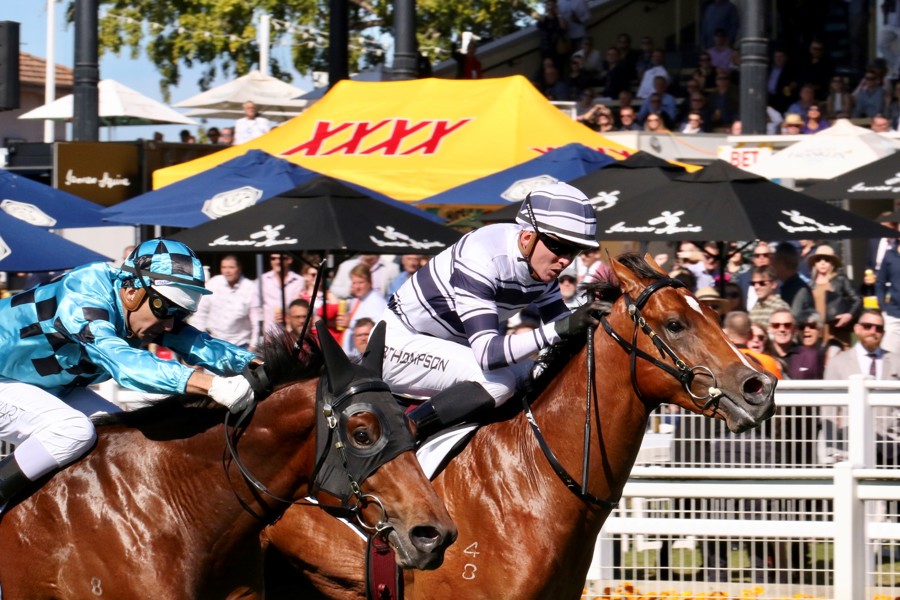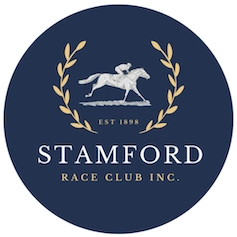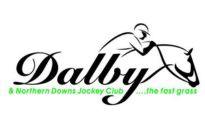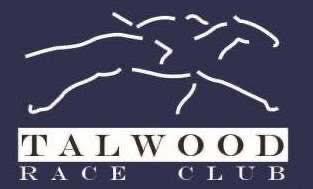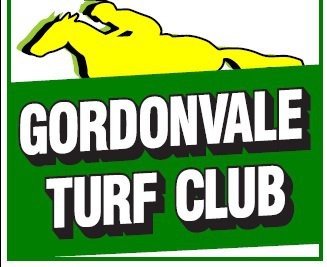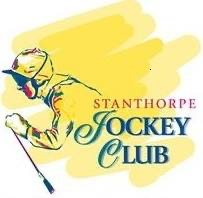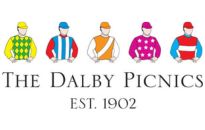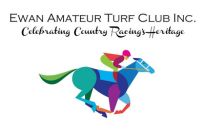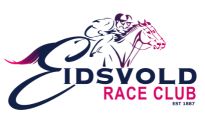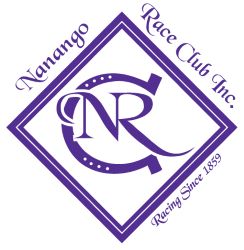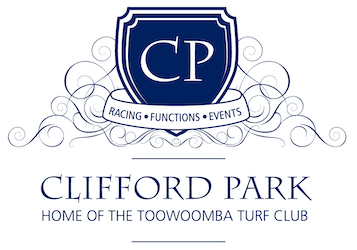
Tales Of The Past: Queensland reaping Melbourne's autumn rewards
Cover photo: Mister Hush cruising to victory in the 1970 QTC Lightning (Courtesy: Darling Downs Institute Press)
By Ross Stanley
Northern state connections began plucking Victorian plums more than a century ago.
Delving into decades of a multitude of post-summer campaigns is very productive.
The main items on the succulent menus for the first quarter of each year included Flemington’s Lightning Stakes, Newmarket Handicap, Australian Cup, Australian Guineas and the VRC Sires Produce Stakes. Caulfield or Sandown hosts the C.F. Orr Stakes, Oakleigh Plate, the Futurity and the Blue Diamond with Moogunynee Valley chipping in with the William Reid (sometimes Australia) Stakes and the Alister Clark Stakes.
AN EARLY SPRIG
An act of burglary by the Kentish stable boy James Winten incurred a death sentence in 1817. After the ultimate punishment was mercifully reduced to transportation to New South Wales, Winten toiled hard, did well and was pardoned.
One of his early purchases was his very own working horse. A century later three Queensland Guineas trophies were presented to his grandsons Darcy, with Yeena Lad in 1911, Rowland (Koatanui, 1912) and Leslie (Delinacre, 1914). Harry Winten, another grandson of James, bred Bernborough.
Delinacre, courtesy of a third placing in the 1916 Oakleigh Plate and a second in the same sprint two years later, became a pathfinder for Queensland’s turf travellers to Victoria.
The 88 guinea buy that was prepared in Brisbane by William Noud was placed in the 1918 Hawksburn Handicap at Caulfield. Linacre’s son also prevailed in a Randwick Flying.
BETWEEN THE WARS
Another early leading light was the filly, raced by Elizabeth Hillcoat, that was part of an equine royal house.
Arrow (Sydney, April 11, 1919) intimated that Reg Hillcoat, while having a friendly glass with friends, discussed the naming of his wife’s well-bred acquisition.
“Several names were suggested, but none seemed to suit when suddenly, looking at his watch, he remarked that he had to meet his youngest daughter, Molly, who was buying a confirmation robe.”
By chance, the chosen name of Molly’s Robe also tied in with her dam Microbe whose foals Star Robe and Vaccine were also feature winners.
Notables among Molly’s Robe’s ancestral family were her sire Syce, Cylene (Ascot Gold Cup, sire of four Epsom Derby winners) and Megaphone, a versatile performer that was less length shy of downing Carbine at Flemington in February 1891.
At two in 1917-18,Molly’s Robe’s seven Eagle Farm outings under the tutelage of Jack Booth netted five wins - including two in open company - plus the runner-up spot in the Sires Produce Stakes.
Her wins at three covered the Queensland Guineas and, a week later, the QTC King’s Plate when she set an Australasian record for 11 furlongs.
In 1919, she was runner-up to the lightweight Cielo in the Oakleigh Plate then scored in the VRC Newmarket. Although she was in the care of Melbourne trainer Fred Foulsham for the 1920 Oakleigh Plate, the Queensland hoop P.S. “Parky” O’Neill booted her home.
In 1928, Mollison, Molly’s Robe outstanding son by Seremond, claimed the VRC Sires Produce Stakes and the Ascot Vale Stakes in the autumn. The champion juvenile went on to take out the 1929 C. M. Lloyd Stakes and the Futurity and was third in the 1931 Newmarket.
His only link to Queensland was through his parentage. He was owned by the wealthy Victorian Ernest Pearce and mentored by Fred Foulsham.
Gold Tie, a colt by Maltser won the 1918-19 Stradbrokes. The Watty Blacklock-trained sprinter displayed his wares again in the 1929 Futurity Stakes and with a fourth in Molly’s Robe’s Newmarket.
Lady Linden, a High Force mare that was leased and trained by Bill Playford, saluted in the 1931 Stradbroke, two Ascot Handicaps and a Tattersall’s Cup at home. Although she was reportedly a bad traveller and didn’t settle in Melbourne, she was on top at 33/1 in the 1932 Newmarket.
Playford took heart about savouring success in the sprint after his previous hopeful, his 1930 Ascot Handicap winner Wise Force, had picked up third placing in the 1930 Newmarket. The High Force stallion won the 1930 VATC Memsie Stakes and ran third in the 1931 William Reid.
In 1936, Regular Bachelor kept the ball rolling by prevailing in the Newmarket with Ted Tanwan as rider. Earlier the Bachelor’s Persse horse had easily put paid to his Futurity Stakes foes.
Brisbane, the venue for a string of wins for Regulate’s foal, was the original stamping ground for his trainer Roley Trihey. He spent the bulk of his career in Melbourne and prepared High Jip, Winlake and Dicast and for their respective victories in the 1950 Newmarket, the 1953 and 1955 Oakleigh Plates.
Pamelus, owned and trained by Harold Dukes, cost a mere 25 guineas. The story goes that Bullhead gelding collected 11 of his 20 first prizes in Victoria.
In the autumn, he won the 1937 William Reid in course record time and the C.M Lloyd Stakes. The bay, with a 9.11 impost, claimed the 1938 Oakleigh Plate and he was the event’s runner-up with 9.10 to Aurie’s Star (9.12) in 1939 and filled the same slot the next year toting 9.8.
Aurie’s Star was the benchmark dasher of the time. In the 1937 Newmarket, the Stardrift gelding carried 8.5. The other placegetters Pamelus and Regular Bachelor both had to cope with 9.7.
Pamelus also managed to finish second in the 1937 Futurity and third in the 1938 William Reid Stakes.
POST WAR
After Bernborough had 19 engagements in Toowoomba for 11 victories, the legal position to race elsewhere was finally created on October 5, 1945 when the six-year-old by Queensland’s Emborough was sold in Sydney to Azzalin Romano for 2600 guineas.
The reins were handed to the Charters Towers-born and former Brisbane trainer Harry Plant. In brief, the entire’s second chapter comprised 17 starts for 15 wins that were book ended by a Canterbury Flying fourth in December 1945 and a controversial fifth in the 1946 Caulfield Cup. He broke down next up in the Mackinnon but was saved for stud duties in America.
His only autumn assignments in Melbourne unveiled an easy 1946 Futurity win with 64.5kg and a breathtaking, blistering burst to snatch the Newmarket with 63kg!
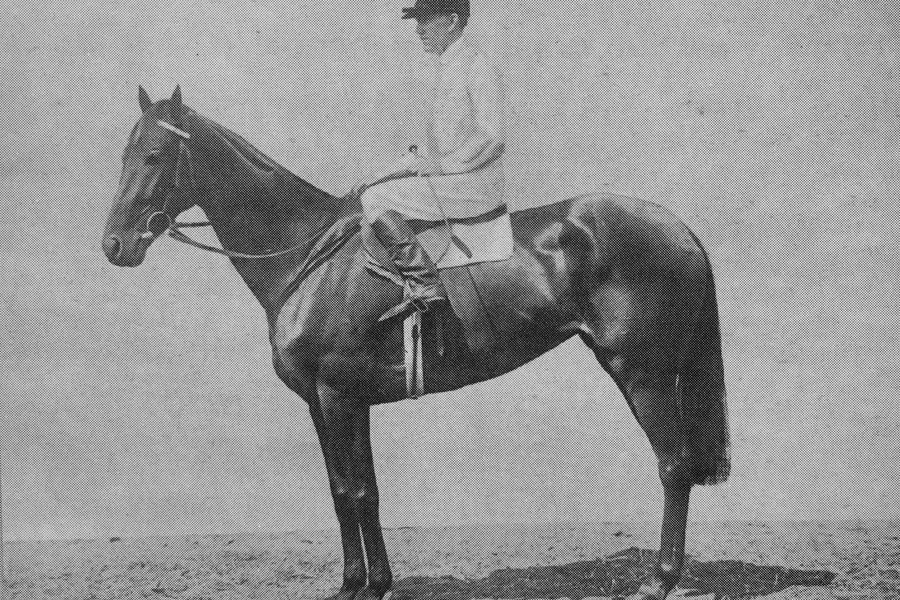
SIXTIES AND SEVENTIES
In 1961 Dream King saluted by five lengths in the Australian Cup, a handicap over 17 furlongs.
The 10/1 chance was ridden by the Boonah boy Mel Schumacher and saddled up by its part-owner Mal Barnes, a horseman who kicked off at Cribb Island and went on to be a key foreman for Bart Cummings.
The Rimveil gelding had won the 1959 QTC Fraser Handicap (12f)-Queensland Cup (2 m) double.
Bore Head was originally prepared in Brisbane by Ron Dillon for Robert Chaplain and his sister Carmel Burke. The stayer by Double Bore was a gift from their elderly father, the Cloncurry district grazier Bill Chaplain.
Dillon and jockey Fred Clarke landed the 1965 Caulfield Cup with the relative of Delta with lightweight Colin “Chicka” Pearson the pilot for the bay’s 1963 Queensland Cup success. Bore Head was based with the Victorian conditioner Des Judd for his 1967 Australian Cup and Doomben Cup triumphs.
Brisbane businessman Bill Stanley and his wife Eve chalked a dead heat in the 1969 Australian Cup with Cyron. The Cyrus entire was trained by Tommy Hill and handled by George Moore, a duo that had been childhood mates in Mackay. The former North Queenslander Frank Reys was atop the co-winner Yootha.
Cyron, in the care of Tommy Hughes, finished second in the next Cup edition while his stablemate Rajah Sahib missed by a half-head in the 1971 renewal. Another Queensland thoroughbred in Tails filled third place.
Emborne was a marvellous competitor. The Emperor mare from Jim Griffiths’ yard won on country tracks, the Brisbane grass and Albion Park sand and Randwick.
A highlight was a game third to Harry Plant’s aspirant Time and Tide and Ripa in the 1965 Lightning. That duo provided a reverse quinella in the ensuing Newmarket.
In the 1960s there were four successive VRC Newmarket results with Sunshine State links.
In 1965, Stan Fox, the mining magnate and a new client of trainer Dick Roden, bought three costly yearlings so his wife Millie could have some fun. At the same sale Roden picked up a Wilkes colt that he named Nebo Road.
Unfortunately for the rookie owners, their new interests went shin sore. Fox offered to buy Nebo Road and, most probably because of a mix of loyalty and a need for money at the time, the former Mackay resident agreed.
The juvenile with the Queensland stallion The Buzzard as his maternal great-grand-sire promptly won the 1965 AJC Breeders Plate. Nebo Road comfortably saluted in the 1967 Newmarket. A year later, Manihi’s head denied him a successful defence.
As a youth, Roden cut his teeth as a strapper and amateur jockey in Mackay. Nebo Road is the main thoroughfare that leads out to the city’s racecourse at Ooralea.
Dame Fortune turned her back on Academy Star, the Edmundo colt that was placed in very tight finishes for the three legs of Sydney’s juvenile Triple Crown in 1966. The jinx continued in majors with minor placings in the 1968 Oakleigh Plate, Doomben 10,000 and the 1969 Newmarket.
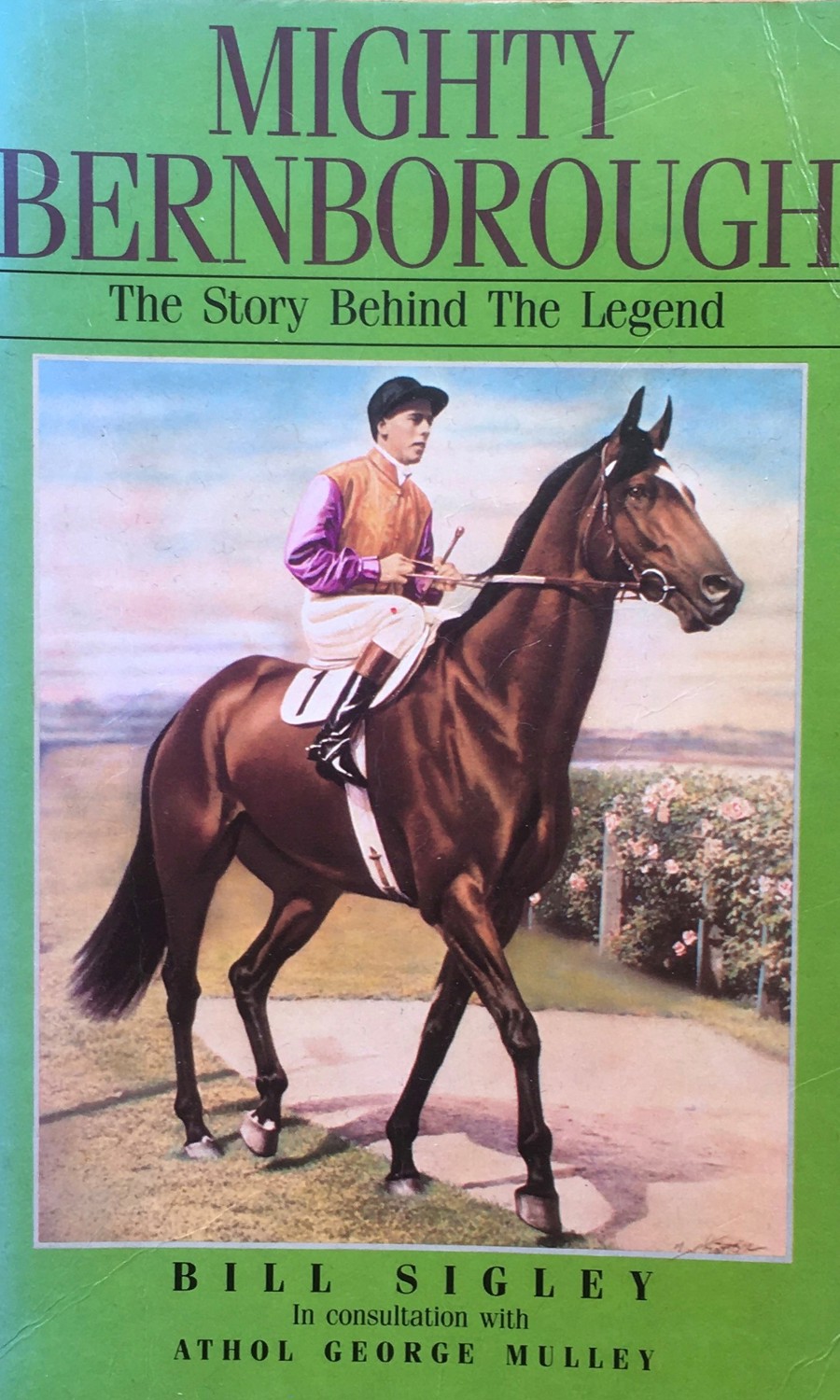
Academy Star, developed at Deagon by Terry Ramsey, got the judge’s pat in the 1966 Canterbury Stakes, the 1968 Healy Stakes and the City Tattersall’s Lightning Stakes.
Mister Hush, a gelding by Rush (Fr) from Winya, struck three times in Lightnings. There were hits in the handicap version at Eagle Farm in 1969 and 1970 and one at Flemington at weight-for-age in 1969.
His trainer Con Doyle, who had tenures at Toowoomba, Deagon and Eagle Farm, found out early about the quality required to prosper in Melbourne.
His essays down there with his first Stradbroke hero Thurles Lad in 1937 earnt a second in the VRC Batman Stakes and a handsome win at Williamstown. His second Stradbroke victor Ballyvista failed in the 1950 Oakleigh Plate but did grab third money in the VATC Hawsburn Handicap.
Kilcoy identity Gus Ferling bred Mister Hush but passed away before Passing Glance’s grandson sported silk. His children Kevin, Dick and Carmel then shared the ownership.
Although Mister Hush did not enjoy the best of transits in the 1968 Newmarket, the four-year-old flashed home for fourth, close up to Manihi, Nebo Road and Begonia Belle.
The next year, because of his comfortable Lightning win, he was the prime fancy for the event but had five ahead at the post.
His third sojourn in 1970 dead-heated for third money in the Lightning and was outright third in the Newmarket with Black Onyx landing the double. Mister Hush secured the Hawksburn at Caufield by four lengths.
Jim Coorey, Bill Bishop. George Pippos and “Winks” McMicking, all mates and affiliates of Goondiwindi, parted with $1300 at the 1969 Brisbane yearling sales for Star Kingdom’s grandson they called Gunsynd.
Although the Sunset Hue colt became a household name with 22 principal events to his credit, his two programs in a Melbourne autumn were a mixed bag.
He was unconquered on three successive Saturdays in March 1972 with easy wins in the Futurity (7f), the VRC Queen’s Plate (10f) and the VRC Queen Elizabeth Stakes (12f).
Sydney’s Tommy Smith, who took over the grey’s training after 22 runs for Brisbane’s Bill Wehlow, extracted every effort from his willing worker.
Kero, the 1976 Meynink Stakes winner, was unbowed four times as a juvenile. The son of Fire King (GB), educated initially by Neil Strong, could scorch grass. Alan McConechy gave him his opportunity in Melbourne in 1979 and lifted him to chalk up 1979. The sprinter, owned by bookmaker Brian Kelly, responded with a Lightning Stakes third and an Oakleigh Plate second.
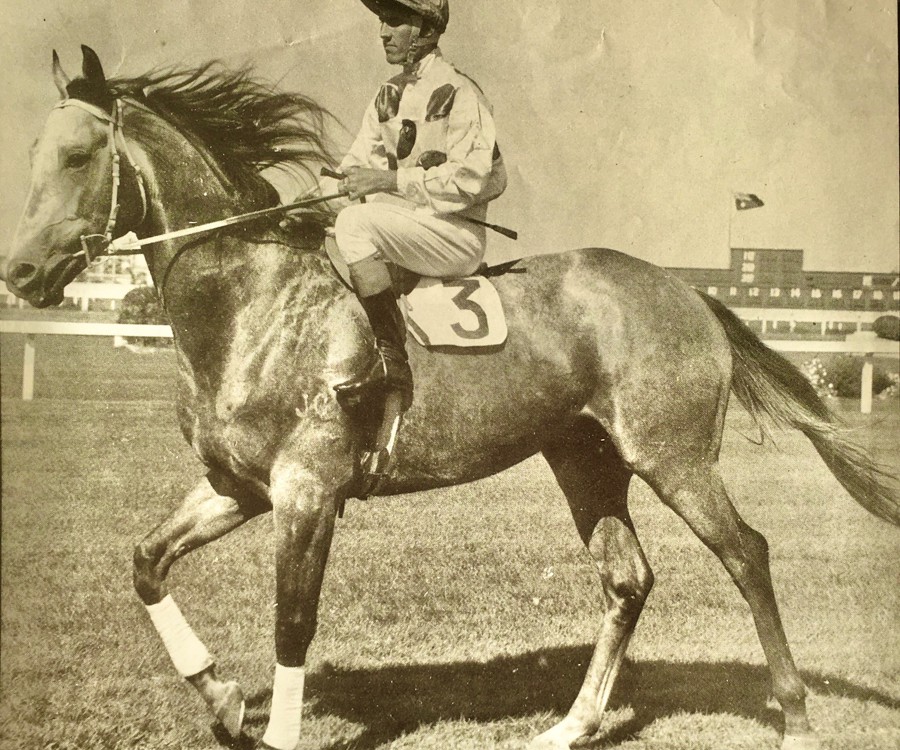
EIGHTIES AND NINETIES
Vo Rogue, an idol of his era, recorded 15 of his 18 black-type level hits in Melbourne.
A dozen of those were in the autumn with the Casino-born Cyril Small his partner on each occasion, namely the 1987 Alister Clark, 1988 William Reid, 1988 Futurity Stakes, 1988-89-90 Orr Stakes, 1988-89 St George Stakes, 1988-90 Blamey Stakes and the 1989-90 Australian Cups.
The son of the non-winners Ivor Prince and Vow, that was owned by the principal shareholder Jeff Perry and John Murray, frequently upstaged the upper most echelons of man and beast.The utterly down to earth trainer Victory (Vic) Rail took the team to an unimaginable heights.
The bold, belligerent and wonderful mover’s centrepiece was his four Australian Cup attempts.
In 1988, as hot favourite, the 125/1 bolter Dandy Andy ran him down with almost five panels to the defending champion Bonecrusher. Vo Rogue (13/8 on) atoned next year ahead of Super Impose, Our Poetic Prince and Dandy Andy.
In 1990, remarkably at 12/1, his closest attendants at the wire were Better Loosen Up (4/1), Super Impose (8/1) and the 2/1 favourite Stylish Century.
Although Vo Rogue was winless for the remaining 16 of an 83 start career, he was around the money in February-March 1991 with placings in the Orr, Blamey and the Australian Cup behind Better Loosen Up. Third in that event was Prince Salieri, the former Queenslander at Bill Calder’s stables that had shifted to George Hanlon’s property near Geelong. The Salieri chestnut won the 1993 Blamey Stakes.
The 1990 autumn forays by the 1989 VRC Derby sash bearer Stylish Century were partly rewarded. The Double Century colt ran fourth in Zabeel’s Australian Guineas and second to the same colt in the Alister Clark. He did take out the Autumn Classic and ticked off a minor placing in the William Reid.
Bruce McLachlan and his son Jason brought several money spinners to Melbourne for the autumn over the years.
With Me, the 1990 Golden Slipper runner-up, equalled the course record in the 1991 Oakleigh Plate after an earlier third placing in the William Reid.
Sublimate, another McLachlan representative was runner-up in the 1994 Oakleigh Plate. His polish on Al Mansour in 1998 was successful in the Rubiton but there was a frustrating string of runner-up cheques in the Australia Stakes, the Orr and the Futurity. The return excursion for four starts 12 months later yielded another nose defeat in the Futurity.
Ron and Helen Ashdown ended up racing General Nediym, a highly impressive chestnut that they bred at their Glengarry Stud near Harrisville.
The dynamo, trained by Bill Mitchell but handled mainly by his young Brisbane foreman Peter Moody, delivered on nine of his initial 10 chores. The only miss was his fourth in the Golden Slipper.
In 1998, the entire parcelled up the Lightning and Newmarket double but was rearward in Oakleigh Plate. His daughter Mrs Onassis provided some compensation by taking out the 1100m dash in 2013.
THIS CENTURY
For Falvelon, the 1998 Meynink Stakes success was the first of five straight in Queensland. The sequence continued in 1999 for his next two starts that included The Chivas Regal in the Melbourne spring.
The 2000 return to Melbourne brought the first defeats, courtesy of seconds in the Lightning, the Oakleigh Plate and a third in the Newmarket.
Falvelon’s highlights were his dual victories in the Doomben 10,000 and Hong Kong Sprints
Meanwhile, the Vice Regal colt Regal Advice served Ross and Judy Cutts exceptionally well. The dam of the 1983 equivalent to today’s J.J. Atkins Stakes winner dam was String of Pearls.
Subsequently, a string of pearls have carried their livery thereafter.
Regal Advice’s daughters produced Miss Sandman and Advisable. The former dropped Show A Heart, the sire of Woorim while the latter’s progeny included Any Suggestion.
Show A Heart was third in the 2001 Oakleigh Plate and then second in the Newmarket. He disappointed in the 2002 renewal of Flemington’s premier straight six contest but was a strong second in the Australia Stakes.
Falvelon and Show A Heart were high achievers and great rivals. They completed the 2002 Doomben 10,000 quinella in that order and it was reversed in the Stradbroke.
Any Suggestion, a grey by Lion Hunter was second in the 2007 William Reid to the Royal Ascot heroine Miss Andretti after running fourth to the same horse in the Lightning.
In 2012 Woorim, trained by Robert Heathcote and ridden by Damien Browne, was under pressure and last on the turn in the Oakleigh Plate. However, a wet sail was hoisted and the $21 pop swamped the contenders on the post.
The wonderful sprinter Spirit Of Boom had two autumn campaigns in the Victorian capital. His three opportunities in 2013 yielded a third in the Oakleigh Plate and sixth spot in both the Newmarket and the William Reid.
The 2014 return round was better. The Sequalo entire finished second in both the Oakleigh Plate and the Newmarket before breaking through in the William Reid for Michael Rodd.
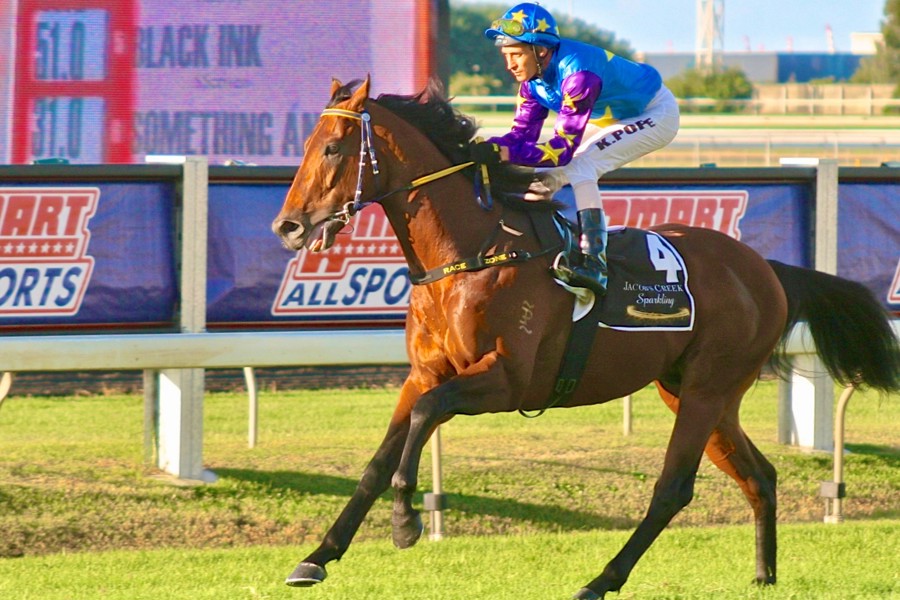
Facile Tigre banked cheques for two wins and a second for Jason McLachlan’s stable in the Melbourne spring of 2011. After a long spell, the Catbird gelding reappeared with a fantastic effort for third in the 2012 Oakleigh Plate before failing the Newmarket. The bay made a solo hit and run mission that collected second prize in the 2013 Oakleigh Plate.
After Virage De Fortune’s fruitful spring in Melbourne in 2005 when she picked up the Champagne Stakes and the Schweppes at Moonee Valley, Bruce McLachlan’s charge returned early the following year. She added the William Reid in race record time when it was designated as the Australia Stakes before splitting and Takeover Target on a very heavy Caulfield surface in the Oakleigh Plate.
After Swiss Ace was only seventh in the 2009 Lightning Stakes, the Caloundra unit of trainer Mick Mair and jockey Ken Pope bounced back at $31 in the Oakleigh Plate.
The Secret Savings-Rapid Serve entire swept across from the outside barrier in the field of 18 to give Pope to sit handy and prove to be resolutely defiant in the desperate closing stages.
In the Newmarket, it was a near miss with the upcoming Royal Ascot winner Scenic Blast snatching a long head edge over the Sunshine Coast galloper.
Owner Darryl Rogers only paid $6000 for the grandson of the Northern Dancer mare Tennis Partner.
Her full brother Ajdal claimed Britain’s elite Dewhurst Stakes and July Cup. He also sired the 1994 Irish Champion Stakes winner Cezanne.
The 13 stakes-winners by the New Zealand-based Swiss Ace included Miss Federer.
Regimental Gal emulated the feats of her father General Nediym by annexing the Magic Millions Classic and Lightning Stakes.
The Shaun Dwyer-trained three-year-old accounted for all except Exceed And Excel and Titanic Jack in a tight 2004 Newmarket battle. The bonny lass successfully wrapped up her only autumn stint in Melbourne in the Australia Stakes.
Although Gold Edition glittered brightly during Melbourne’s springs of 2006 and 2007, her only autumn effort was a fading fourth first up in the 2008 Lightning. The grey was lame and headed off to maternity.
Lion Hunter’s scintillating daughter was trained by Ron Maund and raced by his staunch Victorian clients Kevin and Tanith O’Brien.
Although seven of Buffering’s 20 wins were harvested from his 22 Melbourne appearances, only three were autumn engagements
In 2012, Robert Heathcote’s superstar lodger by Mossman beat all bar Black Caviar and Hay List in the Lightning, missed valiantly by a nose in Hay List’s Newmarket and picked up the minor money in the William Reid.
The sparingly raced Uncommon James has been a tremendous asset for his breeder Caitlin Hoysted, her husband Matt and his co-trainer Steve O’Dea.
Caitlin’s Lavin Park Racing and Breeding organisation is the official owner of the sprinter that was born at Lavin Park in the Lake Macdonald area near Cooroy.
The talented Cable Bay’s five-year-old’s form line reads as 13: 6-4-2 for earnings of $1.4 million. The only unplaced result was in the 2023 The Quokka in Perth when he was only two lengths from the first pair Overpass and Amelia’s Jewel.
The bay gelding has black-type credits in the 2023 Oakleigh Plate with Ben Thompson in the pigskin, BRC Oxlade Stakes and the MRC Regal Roller Stakes plus placings in the The Galaxy and the Manikato, Moir, Rubiton and Schillaci Stakes events.
All the men (and their sons) in Caitlin’s family have James as their middle name. Hence the naming. Also, it was Rick Jamieson, the breeder of Black Caviar, who set up Cable Bay as a shuttle stallion in Australia.
The butcher’s stripe silks stem back to the Rugby days at Brothers in Brisbane enjoyed by Caitlin's father Peter Lavin.
Uncommon James is an American jewellery business that Caitlin patronises. A bonus is that the proprietors have forwarded little gifts. The items have been raceday lucky charms.
Naturally there will be Queensland camps in the future targeting Melbourne. The deeds of their predecessors as touched on above are both inspirational and reassuring.
Note: The above limited sampling does not include a number of other mobile Queenslanders such as Brian Mayfield-Smith, Peter Moody, George Moore, Len Dittman, Larry Olsen, Neville Sellwood and Glen Boss.
